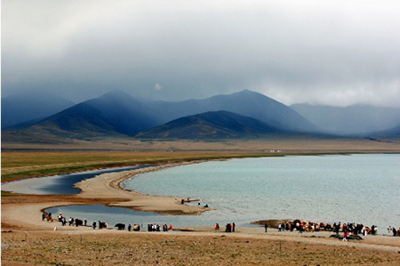| Home / Environment / News | Tools: Save | Print | E-mail | Most Read |
| Scientists Record New Depth of Highest Saltwater Lake |
| Adjust font size: |
Chinese and German scientists announced on Wednesday that the deepest point of the Nam Co Lake in southwest
Scientists from More than 50 percent of the saltwater lake was deeper than 90 meters, said Zhu Liping, a research fellow with the Qinghai-Tibet Plateau Research Institute under the Scientists from the two countries are researching the environmental evolution and development of the lake through investigations of its depth, the thickness and samples of sediment at the bottom, the transparency and color of the water, salt content, the PH index and minerals in the water. The research results were expected to come out in six months, said Zhu. Located at the boundary of Damxung and Baingoin counties, Nam Co Lake is 4,710 meters above the sea level and attracts thousands of visitors annually. "Nam Co Lake has a history of only hundreds of thousands of years, judging from the sediment at the lake's bottom," said Zhu, adding the accurate age of the lake would be known after the research was completed. A lake with sediment about 10 meters thick was estimated be 150,000 to 200,000 years old, Zhu said. "The sediment at the bottom of Nam Co ranges from 20 to 30 meters in depth, and the sediment surface is uneven, indicating it is still being deposited," said Zhu. He said scientists discovered from the lake that the tectonic movement of the Qinghai-Tibet Plateau was still active. The lake had expanded from 1,942 sq km in the 1970s to 1,981 sq km, according to a report by local observers. The water level rose more than 60 centimeters in 2005 and had risen another 20 centimeters this year, said sources with Nam Co Lake Observation under the Qinghai-Tibet Plateau Research Institute. The increased water flow came from nearby glaciers, which had shrunk with global warming, according to researchers. (Xinhua News Agency December 6, 2006) |
| Tools: Save | Print | E-mail | Most Read |
 |
| Related Stories |
|
|
